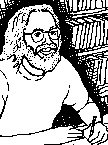
 The beneficiaries of fair trade
The beneficiaries of fair trade
by Marc Becker
The Monitor
March 24, 2004
Lake Atitlan is one of the most positively gorgeous places in the world. Located in the eternal springtime climate of the Guatemalan highlands in Central America, its brilliant blue waters reflect the cones of three volcanos whose eruptions millions of years ago blocked a river to create the lake. Twelve Tzutuhil Maya communities circle the lake, each carrying a Christian name of one of the disciples and as well as a name in the Tzutuhil Maya language. Each of the twelve communities is further marked with its own unique clothing style that has become a symbol of the people’s resilient ethnic identity.
Lake Atitlan has also been the scene of some of the most barbarous and inhumane violence that somehow people are able to practice on each other. During the 1980s, the Guatemalan government in the hands of a wealthy white minority unleashed a genocidal campaign against the majority Maya population who after almost five hundred years of oppression and exploitation demanded their rights to dignity and a decent life.
Santiago Atitlan, nestled between the volcanos on the western side of the lake, was particularly hard hit in the military’s scorched earth policies that attempted to root out insurgent forces. This violence resulted in the deaths of many innocent people and left behind many widowed mothers and orphaned children. After a massacre on the night of December 2, 1990, left thirteen community members laying dead on the ground, the people rose up as a united force to demand peace, tranquility, justice, truth, and security. Using nonviolent means, they forced the military which had perpetrated the massacre to leave their community. Their bravery and success helped bring an eventual end to the political violence which for so long had plagued this earthly paradise.
One of the survivors of this violence is Maria Coquiz, a widow who looks ancient far beyond her 45 years. During the violence of the 1980s, armed men came to her house one night and took her husband away. As with many victims of this violence, his name remains on the list of the “disappeared.” Although he is probably dead, his body has never been found.
Maria lives in close proximity to her neighbors in houses constructed out of bamboo and concrete blocks clustered along narrow dusty paths. They don’t own any land, and the few men who remain in the communities often have to work on the farms of large landholders who have monopolized resources in Guatemala or they travel to the city to work as day laborers.
Maria is a survivor, however, and continues the struggle to improve her life as well as that of her community. Although illiterate and a mono-lingual Tzutuhil Maya speaker, she is part of a group of twelve women who have formed a weaving cooperative in order to survive and to improve the lives of their children.
This weaving cooperative, called Atitlan Dos, began to make checkbook covers, coin purses, and cosmetic bags, but found that the prices they received for their work was so low that it hardly covered the costs of raw materials. Then they discovered fair trade networks that are based on the principle that profits should go to those who do the work rather than intermediaries who previously had swallowed up the lion’s share of the revenue.
For these women in Santiago Atitlan, fair trade means a brighter future. “For us here, this is the only work we know how to do,” says Dolores Tacaxoy, the president of the cooperative. “We are poor, and we use the money for our families.” In a community without land or work, these women now have a means to support their families, including sending their children to school. After a long history of pain and violence, fair trade helps guarantee the women of Santiago Atitlan better tomorrows.